4 Species of Poisonous Toads

Toads are stocky amphibians that tend to be less reliant on water than frogs. These anurans are generally very slow and vulnerable to predators. For this reason, toads have developed a defense in the form of toxins located on the skin, which makes them poisonous.
The warts that give the toads their characteristic appearance are glands that harbor various toxic compounds. When disturbed, these small vertebrates can secrete venom through them, with a milky appearance and a slimy consistency.
But you must be careful with pets or small children, although toads don’t usually pose a danger because the poison is just a self–defense mechanism. If you want to learn more about some poisonous species of toads, keep reading.
The 4 most interesting species of poisonous toads
Although most toads are not of medical importance, poison is a common tool among them. The following are some relevant venomous species.
1. Cane toad ( Rhinella marina )
Native to Central and South America, this toad has been introduced by humans to many other parts of the world. These actions have caused it to become one of the worst invasive alien species on the entire planet.
Cane toads have a very powerful venom, which is stored mainly in their huge parotid glands, located behind the head. In the native range of the cane toad, predators have evolved to tolerate this poison, so they can consume these amphibians and they stop becoming so prevalent as pests.
However, predators from other areas die trying to eat them, and so the cane toads grow without limits. As you can imagine, this creates serious problems in several ecosystems.
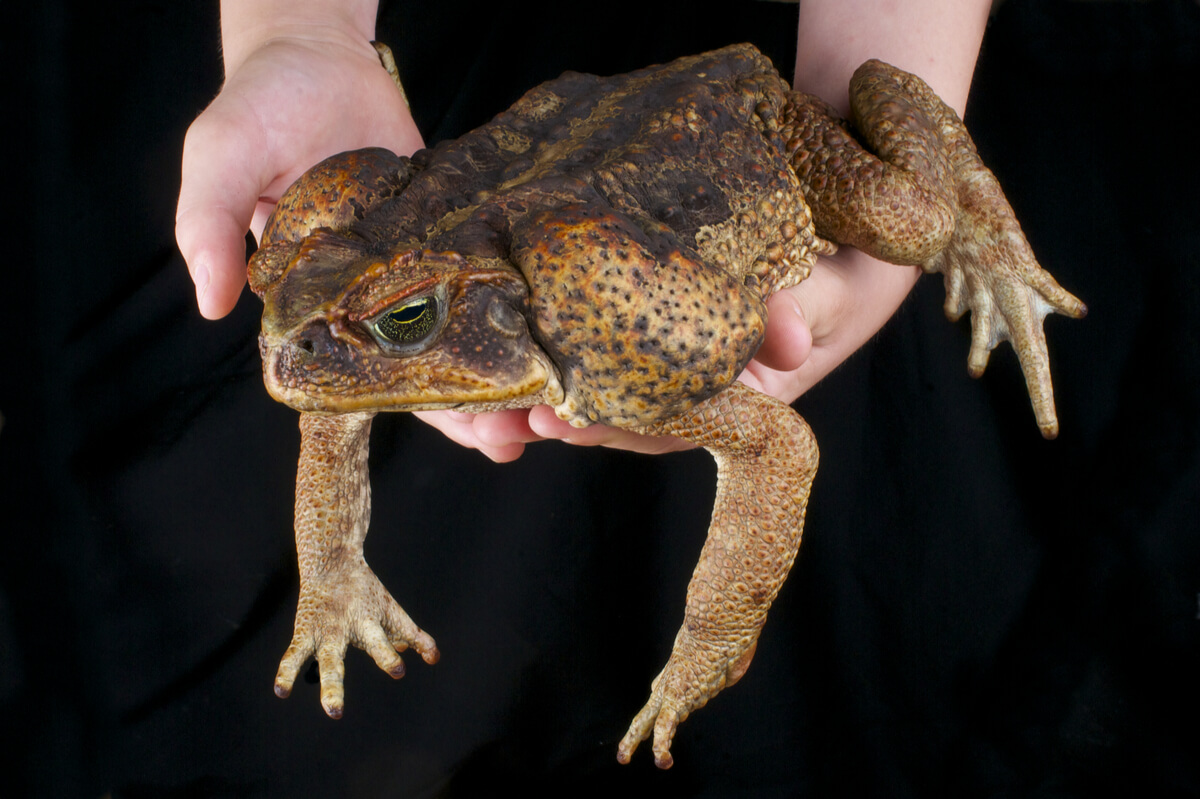
2. Common or European toad (Bufo bufo )
Although smaller and less troublesome than the cane toad, the common toad is another anuran whose venom can cause harm to small animals. Its toxins cause nausea, vomiting and heart failure in extreme cases.
These charismatic animals are very peaceful. They live their lives quietly in the shelter of the night, at which point they come out of their hiding places to feed on invertebrates or reproduce in ponds.
The venom of these animals is composed of bufotoxins and bufogenins, among other chemical substances. The exact composition of toxic secretions is different in natural or human-transformed habitats.
Interestingly, the otters that eat these animals have learned to remove their skin first, in order to avoid ingesting the toxins. When an animal develops a defense response, its predator will surely learn to avoid it.
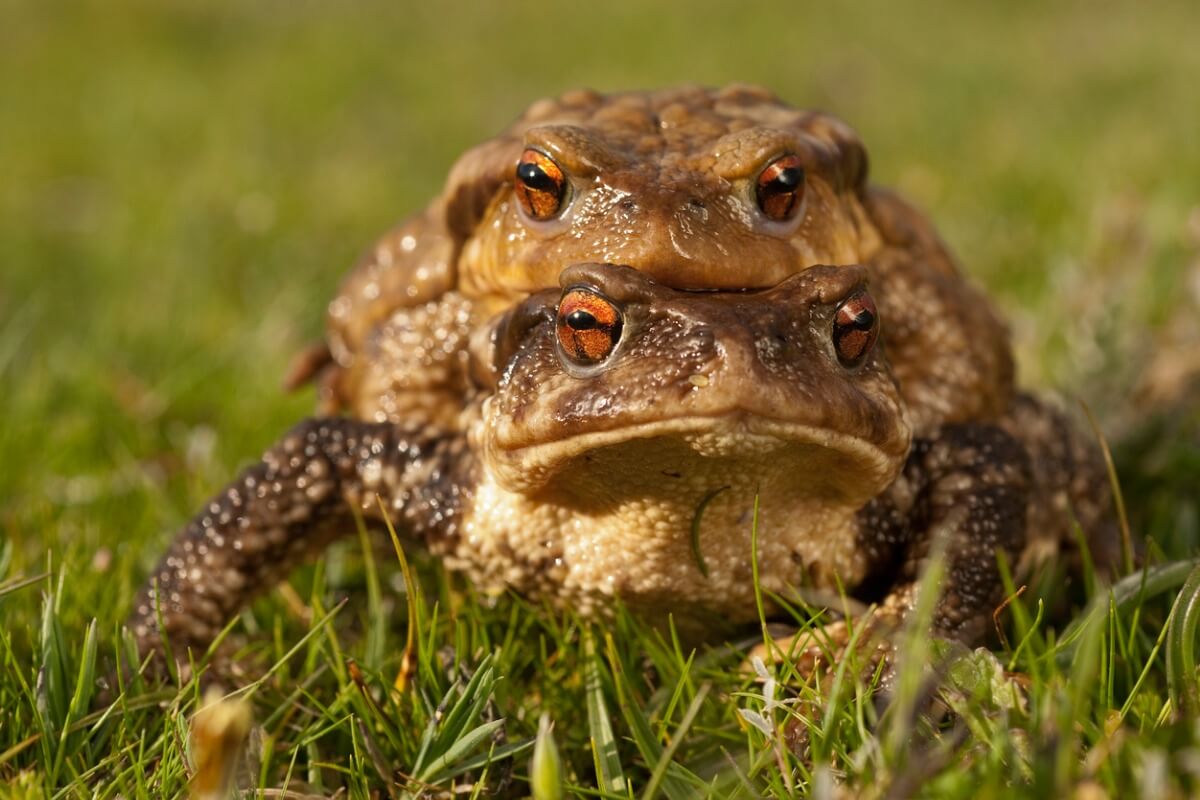
3. Colorado River Toad ( Incilius alvarius )
This is the largest native toad in the United States, measuring between 11 and 19 centimeters in size. They have a tough and leathery skin, olive green in males and mottled brown in females. It lives in southwestern United States and northwestern Mexico.
The toxic secretions of Incilius alvarius contain a compound called 5-MeO-DMT, which has hallucinogenic effects in people. As a consequence of their hallucinogenic properties, these toads are collected and trafficked to obtain this compound, which is used as a recreational drug or to try to treat mental health problems.
Although this toad isn’t in danger of extinction, certain populations are being affected by these practices, which can also cause health problems in humans.
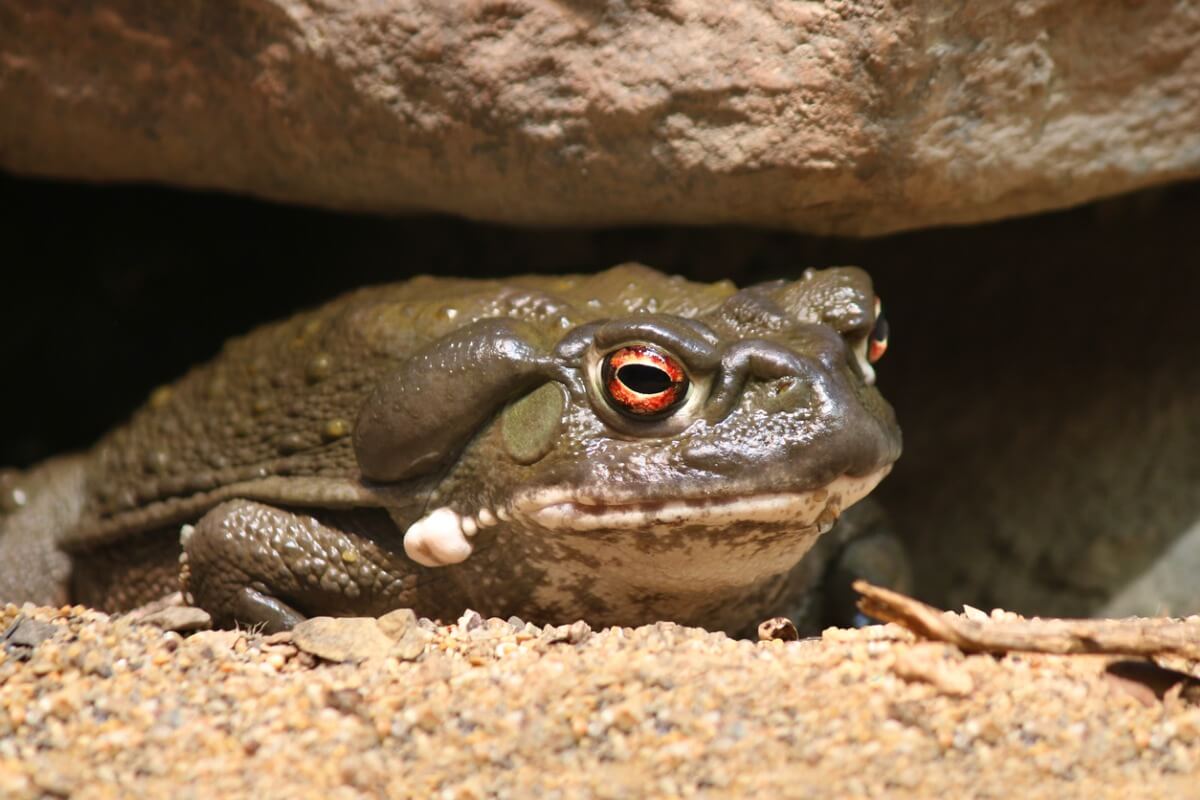
4. Asian giant toad ( Phrynoidis asper )
This species inhabits Myanmar, Malaysia, Indonesia, and Borneo. It’s dark in color and has many small warts on the skin, which give a very rough appearance. In general, this toad appears more slender than others on this list, with longer and thinner limbs compared to the body, which is also less swollen.
The venom of this anuran is mainly made up of bufotenine. Like other toxins in toads, this substance has cardiotoxic effects. It also contains other chemicals, such as resibufogenin. In mice, a dose of 100 milligrams can cause motor difficulties, seizures, and body weakness for 5 hours.
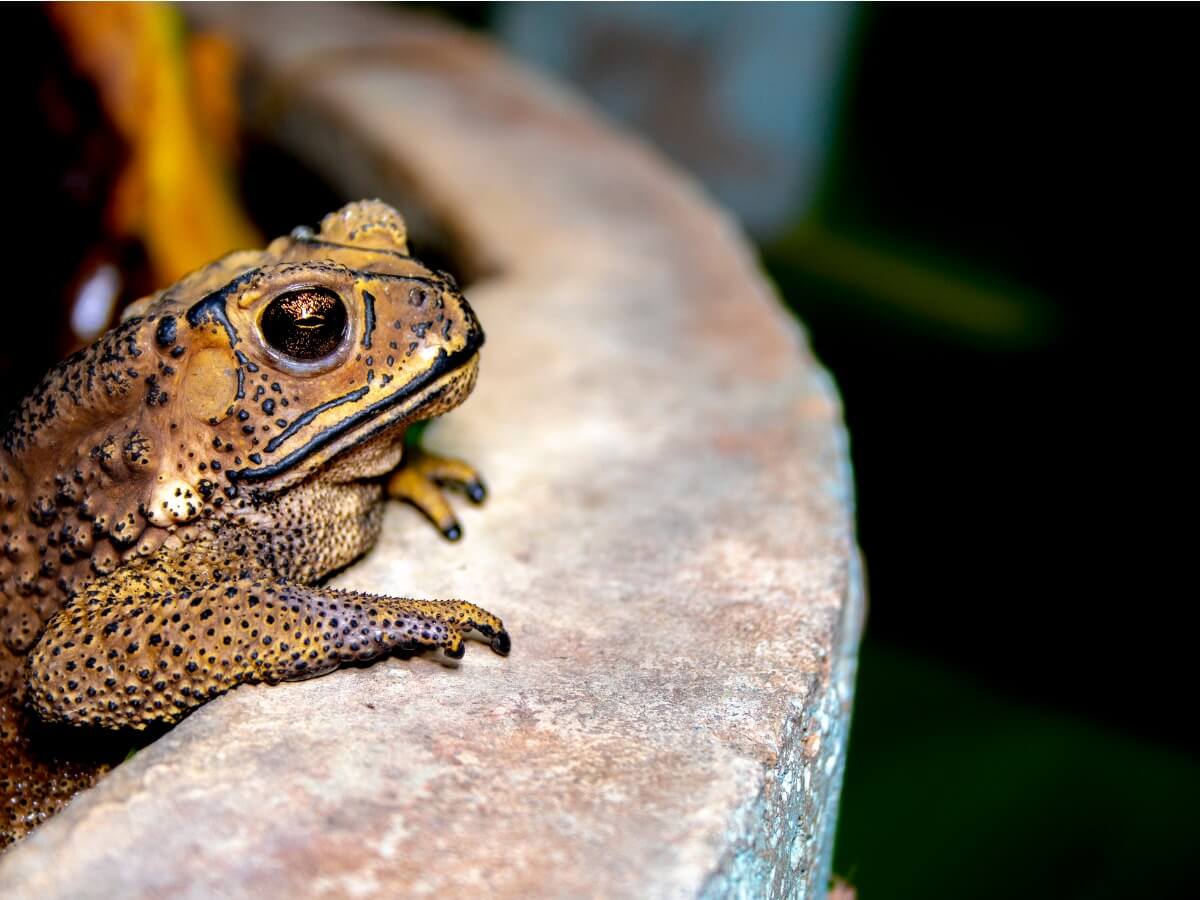
Human uses of toad venom
Although they can be dangerous if ingested, the secretions of poisonous toads have been used by humans throughout history. One of the most typical uses for this poison is as a recreational drug. As already mentioned, toads from the Colorado river are currently used for this purpose, but in the past, cane toads were also collected.
To notice the effects of hallucinogenic compounds, people lick the toads or, failing that, extract and prepare the secretions for smoking. As with any other drug, consuming the venom of these animals carries severe health risks, in addition to damaging these animals and their populations.
The venom of an Asian subspecies of Bufo bufo has also been used for millennia in traditional Chinese medicine. The dried secretions of these animals are used primarily to treat cancer, although their effectiveness is doubtful.
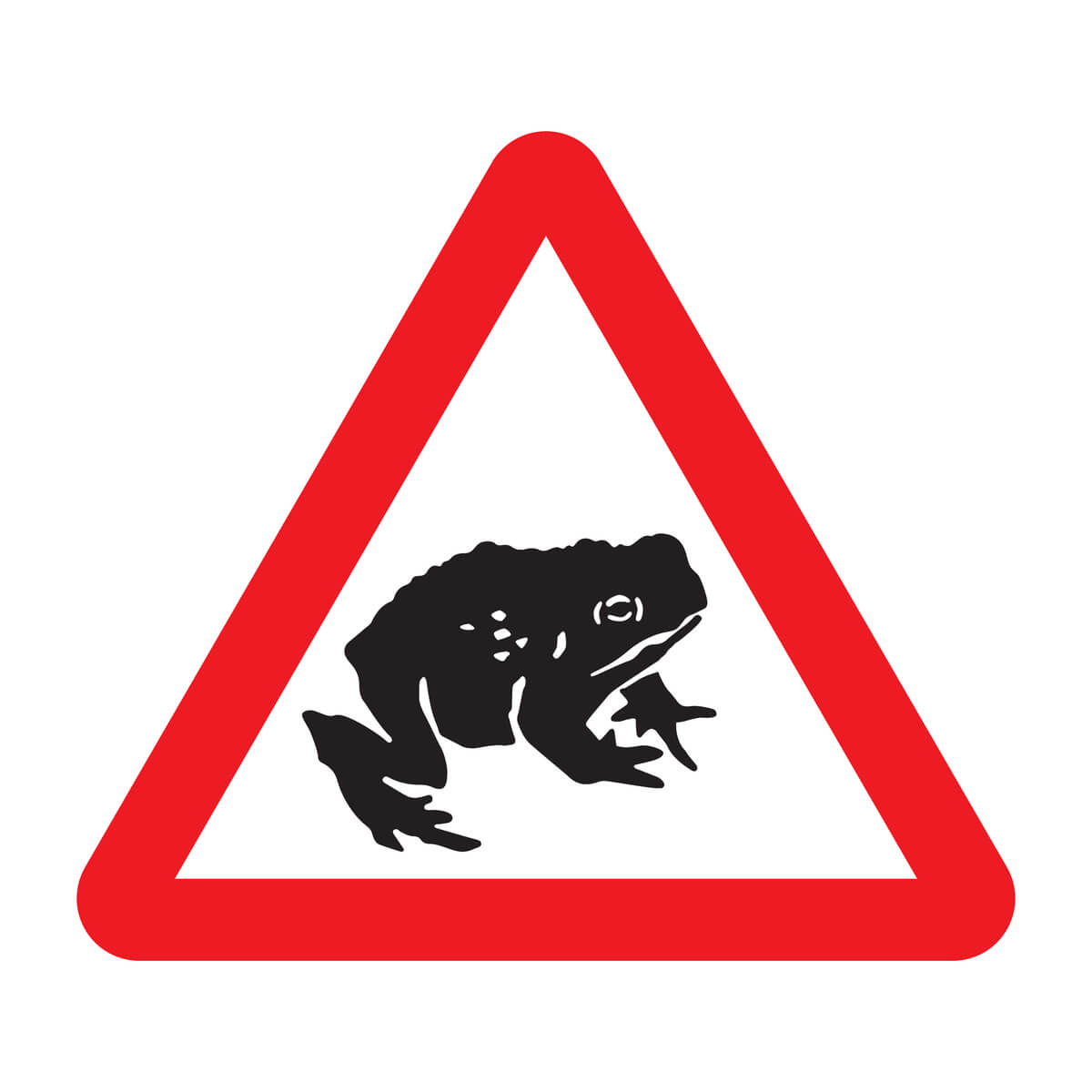
Although some toads are poisonous, they aren’t really dangerous, especially if you avoid touching or disturbing them. They’re very peaceful animals that never attempt to attack and that keep invertebrate populations at bay. Therefore, we can never justify killing these animals, regardless of their toxic secretions.
All cited sources were thoroughly reviewed by our team to ensure their quality, reliability, currency, and validity. The bibliography of this article was considered reliable and of academic or scientific accuracy.
- https://www.nationalgeographic.com/animals/amphibians/facts/cane-toad
- Morales, J., Ruiz-Olmo, J., Lizana, M., & Gutiérrez, J. (2016). Skinning toads is innate behaviour in otter (Lutra lutra) cubs. Ethology Ecology & Evolution, 28(4), 414-426.
- Bókony, V., Üveges, B., Verebélyi, V., Ujhegyi, N., & Móricz, Á. M. (2019). Toads phenotypically adjust their chemical defences to anthropogenic habitat change. Scientific reports, 9(1), 1-8.
- Meng, Z., Garrett, C. R., Shen, Y., Liu, L., Yang, P., Huo, Y., … & Cohen, L. (2012). Prospective randomised evaluation of traditional Chinese medicine combined with chemotherapy: a randomised phase II study of wild toad extract plus gemcitabine in patients with advanced pancreatic adenocarcinomas. British journal of cancer, 107(3), 411-416.
- https://amphibiaweb.org/species/127
- https://amphibiaweb.org/species/97
- https://www.addictioncenter.com/drugs/hallucinogens/toad-venom-addiction-abuse/
- https://amphibiaweb.org/species/110
This text is provided for informational purposes only and does not replace consultation with a professional. If in doubt, consult your specialist.